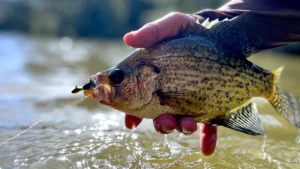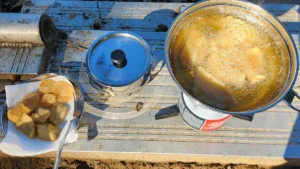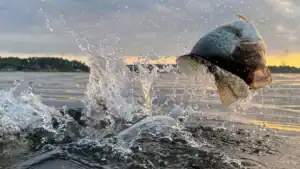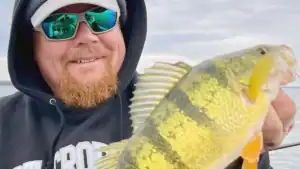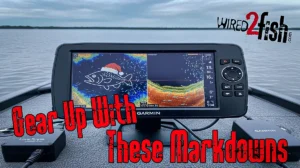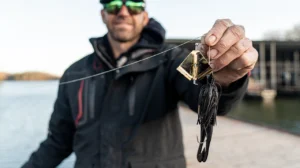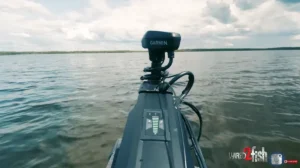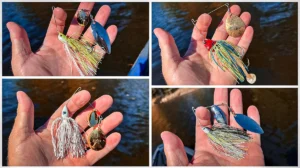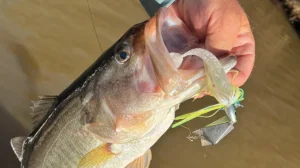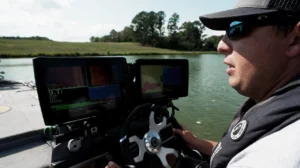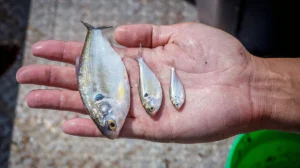Every crappie angler has been there. You find a big school on your electronics, catch a few fish quickly, then watch the bite completely shut down and watch as the fish disperse. For years, I experienced this same scenario and chalked it up to normal crappie behavior. Then I met John Guillot of Kiln, Mississippi, who introduced me to a technique that changed how I approach concentrated schools.
There’s actually a scientific reason why crappie schools shut down after catching a few fish. When any fish gets injured or stressed, it releases chemical alarm signals (known as Schreckstoff, or “scary stuff”) that warn other fish of danger. When a hooked crappie thrashes around near the group, it releases these chemical warnings that trigger an immediate alarm response in nearby fish. The school detects danger and either scatters or develops lockjaw.
The “Above the Fray” Method

Guillot’s solution is simple: fish above the concentrated school instead of dropping directly into it. He calls it “fishing above the fray,” and it came to him by accident.
“I’d grab my pole and tie a jig on, then set the rod down on the bow with the jig in the water while I got situated,” Guillot told Wired2fish. “Sometimes I’d see the tip bob up and down and realize there was a crappie on the other end before I even started fishing.”
That observation led him to deliberately target the most aggressive fish in each school. These are the ones willing to leave the group to chase a jig positioned well above the main body of fish.
How the Technique Works

Instead of dropping your jig directly into the school, stop it 3 or 4 feet above the group in clear water, or about 2 feet above in murky conditions. The key is patience. There’s almost always one aggressive fish that will come up to investigate.
“Usually there’s at least one aggressive fish that will come up and tag it,” Guillot explained. “I started doing this and found that on almost every structure I stopped at, I was catching two or three fish before I even got down to the main group.”
By pulling these aggressive fish away from the school, you avoid the chemical alarm signals that would otherwise shut down the bite. You’re essentially skimming the cream off the top without disturbing the rest.
Get Em’ Out Quick

After learning from Guillot, I tested this technique on a nearby lake I fish regularly. Using a Bobby Garland bait on a 1/32-ounce jig head, I positioned myself over a school and dropped the jig about 3 feet above the group. One crappie immediately came up and hit the jig.
After setting the hook, I continued the upward motion with my rod so the fish exited the water quickly without getting back down to disturb the school. On the next drop, I lowered the jig to about 2 feet above the group and connected with another slab.
After those two fish, I couldn’t get any more to leave the group and had to lower my jig down to the fish themselves. I was able to catch three more from that group before they moved. The technique worked because I usually can only take three or four from a group before blowing up the spot. This time I got five total with less disturbance.
Jig Selection and Water Clarity
My go-to setup is a Bobby Garland bait on a 1/32-ounce jig head, but color selection changes based on water clarity. In ultra-clear water, I’ll go with natural shad-colored jigs and start fishing 3 feet above the school since the fish can see the bait from farther away.
In murky water, I switch to bold, solid colors like black and chartreuse, and I’ll position the jig closer, about 2 feet above the school. The reduced visibility means fish need to see more contrast, but they also need to be closer to spot your offering.
When It Works Best

This technique works year-round across the country. I’ve used it successfully on Toledo Bend and Sam Rayburn Reservoir in Texas with the same results. However, it’s especially effective as the weather gets colder and fish group up tight. Starting in September, crappie begin forming these concentrated schools, and the groupings get tighter through mid-winter.
The tighter the school, the more effective this technique becomes because you have a better chance of pulling aggressive fish away from the main group without disturbing the rest.
Try this approach the next time your electronics show a tight school of crappie. Drop your jig well above them and wait. That first aggressive fish might be the key to extending your success on every productive spot you fish.


